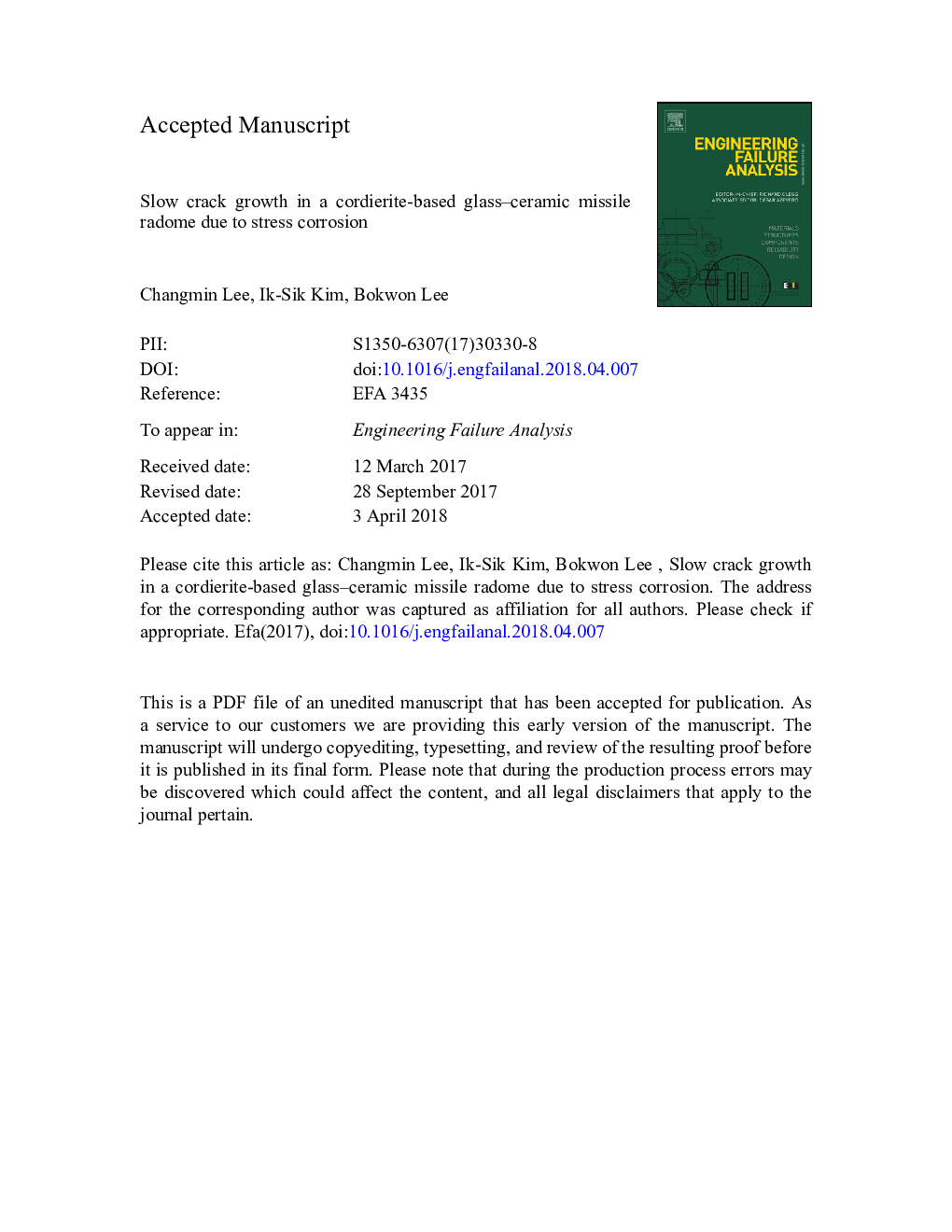| Article ID | Journal | Published Year | Pages | File Type |
|---|---|---|---|---|
| 7166988 | Engineering Failure Analysis | 2018 | 29 Pages |
Abstract
A broken missile radome made of cordierite-based glass-ceramic was analyzed to identify the root cause and the mechanism of the fracture. In the fractographic analysis, the calculated critical flaw size, 144â¯Î¼m, was larger than the actual flaw size at the fracture origin, 65â¯Î¼m. Numerous microcracks were also found throughout the radome. In the physicochemical analysis, silanol (Si-OH) groups were detected at all the investigated sites on the fracture surface. The stress analysis verified that the tensile stress, driving the crack growth, is generated at the inner layer of the radome during flight. All these results strongly suggest that the failure of the radome was attributable to slow crack growth, the key mechanism of which was stress corrosion. It is highly probable that the widely distributed microcracks helped water to permeate the radome, thereby providing conditions for stress corrosion. This study demonstrates that the combined and synergistic interaction of mechanical stress and corrosion reactions iteratively occurred inside the radome through repeated flights and prolonged exposure to atmospheric moisture, consequently resulting in the radome failure.
Related Topics
Physical Sciences and Engineering
Engineering
Industrial and Manufacturing Engineering
Authors
Changmin Lee, Ik-Sik Kim, Bokwon Lee,
